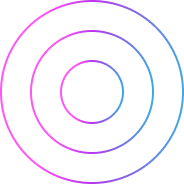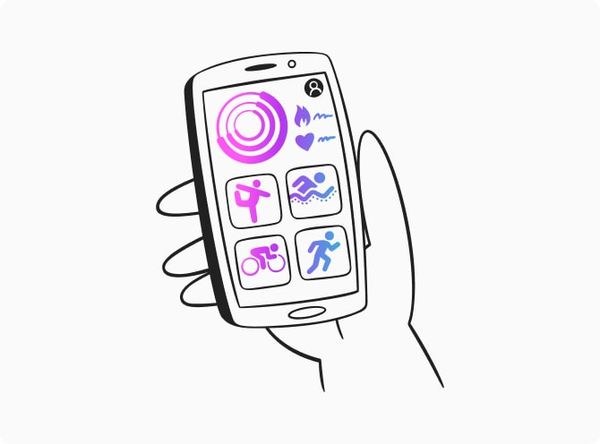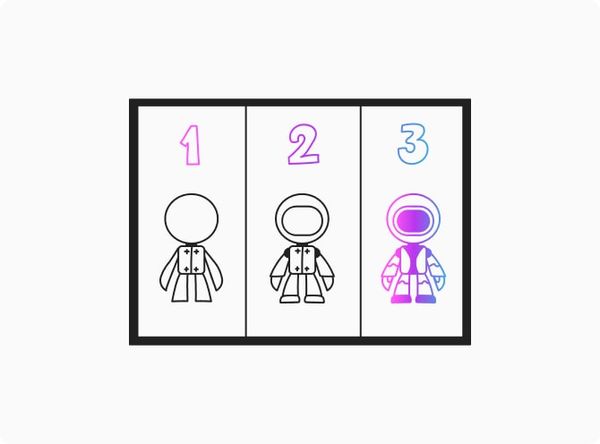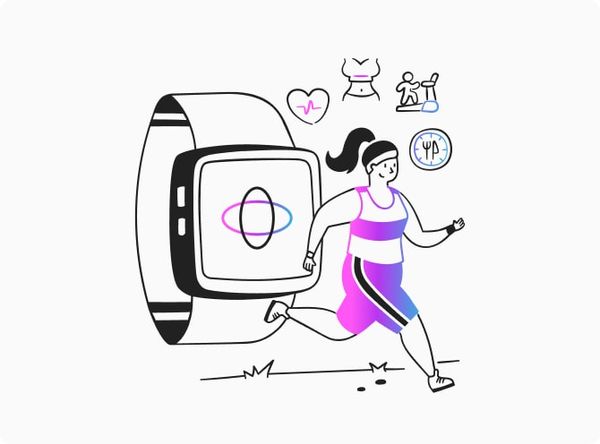
When working on your digital product, you want it to succeed. You invest your time, money, and the resources of your team in it. But once the product gets released, it may turn out that your expectations about its potential reach and the overall demand do not match the reality.
In the extreme cases it may turn out that your product concept isn't viable and won't be able to reach projected business goals. This is an example of a situation that demonstrates the critical importance of the MVP for app development. Read on to find out what MVP is, how to develop a fitness app MVP, and which features to include in the future MVP of your health and fitness app.
Significance of an MVP in Developing a Fitness Application
There are several interpretations of the acronym MVP, but the conventional one is 'Minimum Viable Product'. It refers to the initial version of a product that has enough features to be usable and launched in the market. The MVP is commonly used by companies to help them test their business idea by attracting the first users of the app and getting their feedback.
The applications of MVPs aren't limited to a wellness field only. In fact, MVP is an absolute necessity for every company looking to validate their app concept before actually making significant investments in the development of a full-scale product.

The Benefits of MVP Development For Your Fitness App
Development of the core functionality
Fitness app MVP development gives startups a great opportunity to focus on their main concept and not get distracted along the way. One of the common mistakes for newly established companies is that they are trying to fit everything and anything into their products — spending months on redundant functionality that may not even be relevant to their market.
With the MVP in mobile fitness app development, however, developers concentrate on a couple of core features. This allows them to see right from the get-go whether their business idea is viable or not.
Better understanding of user needs
When it comes to the effectiveness of your product, nothing can beat user feedback. No assumptions or analytical forecasts can give you a better picture of how your product gets perceived in reality. So, the sooner developers get that feedback from early adopters the better. This helps them understand if something needs to be adjusted early in the development process.
Another side of the coin is that when you build your MVP you establish a better, and more personal connection with your audience. This can help generate additional buzz around your product and spread positive interest via word-of-mouth about it.
Faster time-to-market
As often happens with startups, the resources are very limited, and getting a project mired down in a never ending production is definitely not an option. With the Minimum Value Product in fitness app, you concentrate only on core features which — with proper planning and a professional team — significantly speeds up the development process, and lets you roll out your fitness application faster.
With an MVP you also don't want to waste time and money debugging tons of fixes that inevitably take place when launching a feature-heavy product. Instead, moving step by step with the MVP version will be a safer strategy.
Flexibility
One of the greatest advantages of the MVP approach lies in its flexibility. By constricting the product complexity, you can react to all changes and user needs in a timely manner, quickly fixing or updating your app. While your app structure is not packed with dozens of blocks, integrations, and elements, you can easily introduce new updates that your target audience is asking about.
Clarity of UI/UX
One thing that developers should avoid doing at all costs is making the app's interface complicated and cluttered. It is especially important as new products typically won't have a chance to deliver the first impression twice. Not only is it easier for a user to navigate through a clear interface, but it also gives more room for developers to test different UI features separately while paying more attention to each of them.
5 Key Stages of Fitness App MVP Development Process
1. Validate your idea
Many new startups fall into the trap of overestimating the importance of the problem they want to solve with their product. In other words, it may turn out that after the app release no one will be interested in it because developers' expectations don't correlate with user needs. So, in order to avoid that, it's better to validate the product idea before starting the development.
Idea validation normally includes competition analysis, gathering feedback from a certain group of people/users regarding your concept, and carrying out surveys and interviews. This is how you will be able to save yourself time and money, and ensure that an app will actually 'have' its own market.
2. Map out user flow
Getting an understanding of how users will interact with your product is more important than the number of features you add, or the visual superiority of your UI. By mapping out the user journey you will figure out how to arrange the app structure in such a way that it naturally takes a user from point A to point B.
For example, if you target people who are on their weight loss journey, you know their initial problem is excess weight. Now you need to consider what UX your app will offer them. Should they be taken to the weight loss program immediately from the main screen of the app or should they be first presented with some helpful health information. Alternatively, you could ask them to go through a simple in-app test first to determine what would work for them best. There are many options to consider and each one of them will depend on your target audience.
3. Prioritize core features
The core or key features are those that should be added to your app initially. This is the functionality that is crucial for your app concept and it forms the foundation for all future updates and changes that may take place. Refer to these three questions when considering which features to add to your MVP:
- Does this feature provide value to the users?
- Will this feature keep my users engaged with the app?
- Will adding this feature differentiate my app from other offerings on the market?
4. Choose app development team
If you don't have prior experience creating digital products, the best way to develop your MVP would be to hire a professional app development company with relevant expertise in your field. When looking for one make sure to check their portfolio, the tech stack they're working with and reviews of their past clients. After shortlisting companies that suit you, conduct an interview with them to assess their communication skills and development standards to help you better understand their expertise.
5. Launch an MVP
Once the technical side of a project has been carried out you are ready to launch your MVP. Your goal here is to make sure that your app reaches the target audience so that you can collect their initial feedback and start working on further improvements. There are different ways you can market your MVP: via landing pages, bloggers, and by running ad campaigns and explainer videos on social media.

Choosing Features For Your Fitness Application MVP
User profile
The in-app user account should contain all the basic user data — their name, age, credit card info, as well as health data, such as weight, height, and age. It may also include additional health information needed for the app to offer the weight loss program most relevant to a particular user.
Training module
This is where all the training programs get stored in the app. The training module may also feature various filters that would help to adjust the training program to the user's needs in the best way possible. Workout plans may vary by goals, complexity, intensity, duration, and even age.
Stats
Not only do detailed statistics give better insights into the user's progress, but it also motivates people to move on and continue their fitness journey. This module may feature a progress bar, training history, current achievements, missed workouts, etc. Workout data may be retrieved here directly from wearable devices or other activity trackers integrated with the app.
Video library
You can hardly imagine workout apps without video libraries. This module should present users with high-quality video content that details the correct techniques for all the exercises and workouts in the training module.
Leaderboards
It's nice to leverage user experience by adding leaderboards and bringing in a competitive spirit. On leaderboards, users get to see their current rank and the results of their friends, family members, or other people. The leaderboards may also feature awards and virtual badges that can be added to a user profile or in-app icons once they complete a competition or hit a specific goal.
How to Get Out the Most of Your Fitness App MVP
A well-thought-out fitness app MVP development will lay the foundation for your future fully-fledged product. Knowing the main stages in fitness app MVP development is as important as knowing which pitfalls to avoid. Here are some more things you need to take into account when building fitness app MVP to ensure its success:
- Know your market and what you're aiming for — before you proceed with your app development you need to know who your target audience is, what will make them try your product, and whether there are any apps with similar concepts on the fitness apps market already.
- Have a business plan — it will help you to understand all your expenses and what's more important, figure out how your app will get monetized. There are several monetization strategies you can choose from; freemium, in-app ads, subscription, etc.
- Don't cut corners — many mistake the MVP approach as a way to cut corners, but it shouldn't be approached as such. MVP is the very first version of your product with the basic functionality, not some sort of product with chopped-off features, missing colors, empty screens, mismatched fonts, etc.

How Lunka.tech Can Help in Developing Fitness App MVP
At Lunka.tech we value the quality of our health and fitness app development services and the openness of our cooperation with clients. As an MVP app development company, we always strive to deliver the best possible results — those that 100% correspond to the client's initial idea and market demand.
Our programming expertise spans different industries (Telemedicine, Health, Fitness, Fintech, E-Commerce, etc.), technologies (Swift, Django, Firebase, Python, etc.), and development techniques, allowing us to tackle the most challenging and innovative projects. This can be clearly seen in our portfolio. So if you're on the lookout for a reliable software development partner — Lunka-tech is your choice!

Final Thoughts
Today it's hard to imagine launching an app without coming up with the MVP version first. MVP allows you to shorten the development time and build a fitness app not only within a limited time frame but within a limited budget as well. In other words, it is a safe bet that lets you 'test the waters' with your business idea before taking the plunge.
However, it's still better to have a reliable software development partner who can understand your business needs and smoothly take your project through all the development stages. At Lunka.tech, that’s exactly what we do for you. If you are interested to know more about how to build MVP for a fitness application, reach out to us by email, phone, or a feedback form. Our managers will get in touch with you ASAP!
FAQ
Why do you need an MVP for your mobile fitness app?
The main reason for developing a fitness app MVP is to validate your business concept. While an MVP for fitness app (or any other type of app) normally comes with the core features only, it helps developers check whether the app's idea resonates with the target users. It does that with minimum investments compared to the development of a full-scale wellness product that comes with many secondary features and takes lots of resources to create.
What is the average time of building a fitness app MVP?
It typically takes from 2 to 4 months to create MVP for fitness app. Obviously, the development timeline depends on the number of core features to integrate, the complexity of the app's design, and the amount of resources at your disposal. However, one important thing to keep in mind is that fitness app MVP development shouldn't take long (relatively speaking). Otherwise, the project risks falling into the rabbit hole of neverending edits and direction changes that devour resources and end up not having much in common with the initial MVP concept.
Is there any fitness app MVP template?
When it comes to the development of an MVP version of an app, there's no one-size-fits-all regarding which stages you should include. However, there are some core principles and 'checkpoints' you should follow to build an MVP for a fitness app. The article above describes all of these. So, if you need more information, please don't hesitate to reach out to our managers via a contact form.
How many features should an MVP have?
Normally, we are talking about 2-3 core features. It's important to keep the number of MVP features at a minimum to make sure that users stay focused on the main idea of your app and don’t get distracted by secondary functionality.


